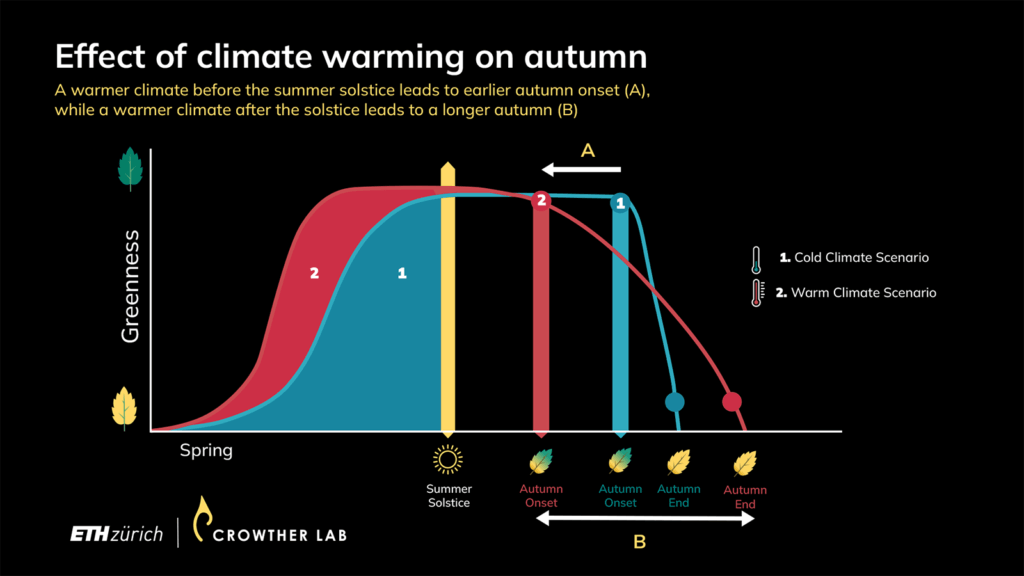Spring keeps getting earlier, but the timing of leaf fall in autumn has been more of a mystery. For the first time, a study helps solve this mystery by revealing the pivotal role of the summer solstice. The research shows that warming before the solstice triggers an earlier onset of leaf senescence, while warming after the solstice slows down the discoloration process.
Forests have long been recognized as crucial carbon sinks. However, in temperate and boreal regions, the ability of trees to draw down carbon is constrained by an annual winter pause. Understanding when the growing season will end under a warming climate is therefore paramount for accurately modelling global carbon cycles.
A new publication in the journal Science sheds light on the complex interplay of environmental factors that affect the timing of autumn leaf senescence in northern forests during which leaves start to lose their green colour and finally fall off the trees. Using diverse data sources, including experiments, ground observations, carbon flux measurements, and satellite data, the scientists discovered that a warmer climate during the growing season is a key driver for autumn onset. Their analyses reveal that the effects of climate warming on this phenological process are contingent upon whether it occurs before or after the summer solstice, a key astronomical event that typically falls on 21 June in the northern hemisphere.
Different effects on autumn onset and duration
Specifically, when warming takes place before the summer solstice, autumn starts earlier due to accelerated seasonal cycles in trees, resulting in the onset of leaf senescence and declining photosynthesis. Conversely, warming after the summer solstice slows the progression of leaf senescence, extending the duration of autumn and causing leaves to fall later. On average, each degree Celsius of pre-solstice warming advances the onset of leaf senescence by 1.9 days, while each degree Celsius of post-solstice warming extends the senescence process by 2.6 days.

The summer solstice effect: warming before or after the solstice have different effects on the start of autumn and its duration.
But why do the effects switch around the summer solstice? “The unique shift in effects around the summer solstice is understood as an evolutionary adaptation that allows trees to synchronise their growth rhythms with the changing day length”, says Dr. Constantin Zohner, the lead author of the paper.
This is the first time a study was able to detect both effects at the same time. The findings hold true across continents and forest types, providing a unified understanding of the constraints and drivers of the growing season. “Understanding the timing of autumn leaf senescence for temperate and boreal trees is critical to our efforts to predict landscape changes, carbon storage capacity, and the overall impact of climate change on forest ecosystems”, concludes Prof. Dr. Thomas Crowther, senior author of the paper.
The Science publication “Effect of climate warming on the timing of autumn leaf senescence reverses after the summer solstice” will appear at this link once the embargo has lapsed: https://doi.org/10.1126/science.adf5098.
For media enquiries:
[email protected]
